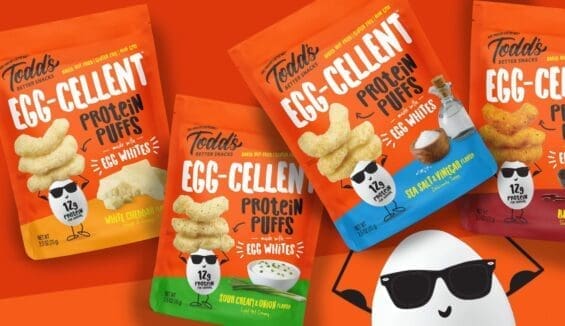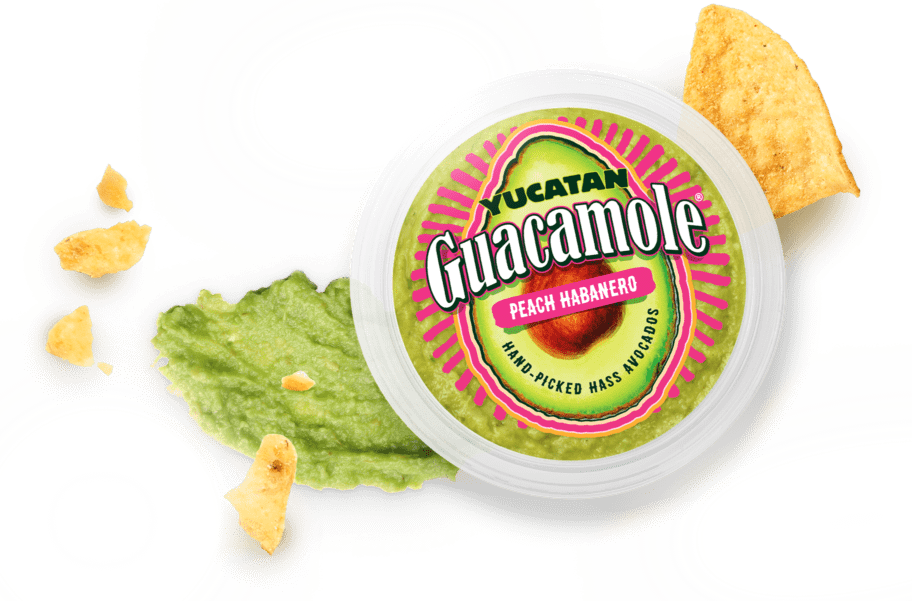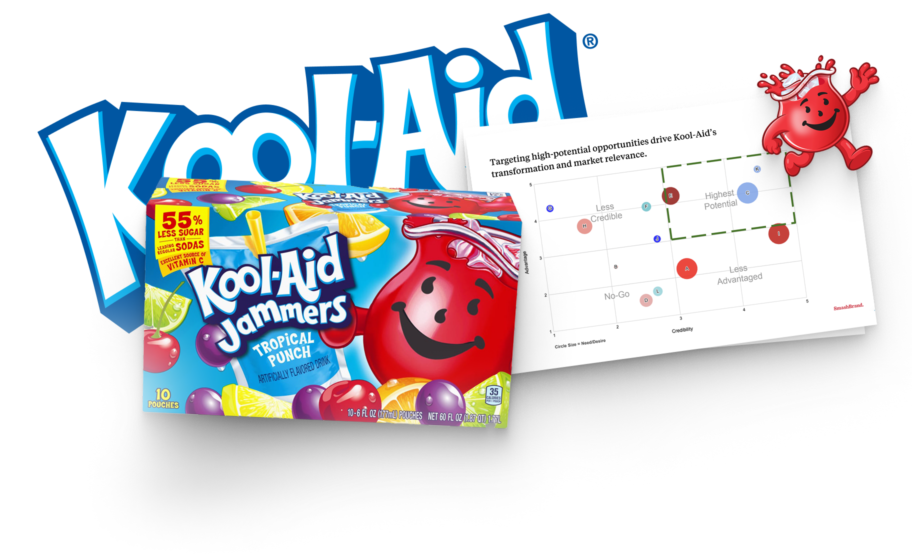You’ve invested in the redesign, aligned the teams, launched with confidence, but sales haven’t moved, and the worst part? No one can tell you why. Sound familiar? It’s not your product or your packaging, but your branding positioning, or more precisely, the lack of an effective brand positioning strategy.
Branding and positioning are the foundation of how your brand wins at the shelf and grabs consumer attention., For instance, a strong brand positioning statement clarifies what you stand for, who you serve, and why it matters. Your brand doesn’t just need to show up; it must own the moment and appear as a solution.
In this article, you will learn how an impactful branding and positioning strategy sticks, sells, and connects with your target audience where it counts. You will also learn the common mistakes to avoid when developing the brand strategy and the critical factors that affect the brand personality.
Branding vs. brand positioning and how they link together.
Sometimes beginners use the terms branding and brand positioning interchangeably, but they serve two different, essential roles in building a strong brand that drives real results.
Brand positioning is the strategic foundation. It defines the what and why behind a brand. It articulates the brand’s value proposition, establishes its differentiation in the category, and builds emotional resonance with the target customer.
It is where the brand promise is clarified and the product positioning is aligned with consumer needs. Strong brand positioning ensures your brand is not just present in the market but also preferred. It’s the core of brand strategy and the blueprint for brand perception.
Branding, on the other hand, is the how. It’s the expressive layer, the brand identity, the packaging, the tone of voice, and the visual system that consumers see, feel, and remember. It’s how brand awareness is created and brand value is communicated in the three seconds a shopper gives you at the shelf. Branding brings the brand promise to life and ensures every touch point reinforces the brand’s story.
The two must work in lockstep. A positioning strategy without branding is just a plan; nothing moves. Branding without a strategy is just decoration; nothing sticks. Accurate brand equity is built when a precise, compelling brand positioning is executed through branding that commands attention and earns trust.
Understanding the rational and emotional framework.
Knowing how consumers choose a brand starts with understanding how they think and feel. That’s where their rational and emotional framework comes in. It’s the foundation of every effective positioning strategy that also guides the brand extension and lens through which successful CPG brands build trust, stand out, and drive choice.
At SmashBrand, we call it the head and the heart framework, which is explained as follows:
The head (rational).
It is the logic-based layer. It answers:
- What is this product?
- Why is it better than the competitor?
- What makes it valuable to me, right now?
The head appeals to reason. It’s about clear brand messaging, product functionality, tangible benefits, and a pricing-to-value story that resonates with the target market. For instance, in market positioning, a cleaner that shows “kills 99.9% of bacteria in 30 seconds” speaks directly to rational urgency. These messages build credibility and form the backbone of any successful brand positioning.
The heart (emotional).
It is where brand loyalty takes root. It answers:
- How does this brand make me feel?
- What emotional role does it play in my life?
Emotional cues, tone of voice, imagery, archetypes, and verbal personality create a sense of connection. A pet food brand might lean into care, companionship, or fun. A wellness brand might evoke self-respect or transformation. These emotional hooks transform customers into brand believers and drive long-term customer loyalty.
Why CPG brands need both.
The target customers don’t have time to decode vague brand architecture or interpret soft claims. They want clarity (head) and relevance (heart) immediately. Using this framework ensures every word and visual earns its place, creating clarity, distinction, and emotional pull across packaging, marketing, and shelf presence.
Whether evolving a current brand positioning or creating from scratch, integrating both head and heart ensures your brand is chosen over the competitors. It’s what sets apart the brands that look good from the brands that lead.
Strong brands build connections with consumers, and that connection drives repeat purchase, stronger brand management, and real growth. Just look at leading brand positioning examples across the CPG industry; almost all of them start with this framework.
Why branding positioning drives sales in CPG.
In CPG, shelf space is a battleground, and branding positioning is your sharpest weapon. Success here won’t come from having a good product alone. It comes from ensuring that the product communicates exactly why it’s worth choosing quickly.
What makes CPG unique?
In most categories, consumers make split-second decisions. It is the reality of a crowded shelf, limited attention, and a sea of options. Your packaging is the most visible and most consistent expression of your brand. While it’s not your only ad, it’s the one every potential customer sees, whether they’re actively searching or just browsing.
For challenger brands without equity, brand recognition, resonance, and trust aren’t the initial conversion levers; appeal and clear benefit messaging are. Resonance may support trial of additional SKUs, but that first sale comes from a design that says, “this is for you,” and a message that backs it up with reason to believe.
For established players, the gap between trial and repeat is bridged by delivering on brand promise and reinforcing emotional relevance. For both, clarity and consistency win.
How proper branding positioning drives sales.
A strong brand positioning strategy tailored to the CPG environment impacts every key performance factor:
- Increases Shelf Standout: Strategic visuals, ownable assets, and concise messaging help brands grab attention in seconds and gain an edge in any competitive landscape.
- Improves Consumer Recall: Distinctive packaging and unified brand systems make your product easier to remember and easier to find again, reinforcing your brand’s position over time.
- Justifies Premium Pricing: When consumers understand what makes your product different, they’re more likely to pay more for it. A strong brand position gives them that clarity.
- Creates Long-Term Loyalty: While appeal gets the first sale, delivering on your brand purpose earns the second, third, and tenth. It is how brands build equity and grow market share over time..
What makes great branding positioning work?
You can’t position a brand until you understand the consumer behind the purchase. It isn’t about vague demographics or aspirational personas; it’s about the real people scanning the shelf or clicking through a product grid, making decisions in seconds.
Effective branding positioning starts with uncovering what motivates your target customer to choose one product over another. Is it convenience? Value? A functional result? An emotional benefit? When building a CPG branding strategy, consumer insight is what separates grounded decisions from creative guesswork. It tells you not just what to say but how to say it in a way that gets chosen.
For example, if you’re launching a new product branding initiative in a saturated snack category, knowing that your audience seeks guilt-free indulgence gives you an entirely different message and tone than “healthy snacking.” Insight reframes the narrative around their actual need, not just your product’s features.
White gap analysis.
Too many brands enter the market with a look and feel that blends in. That’s a shortcut to irrelevance. White space analysis means identifying the untapped angles in your category, the needs your competitor isn’t speaking to, or the emotional position no one has claimed.
Whether you’re refining your product branding strategy or rethinking your e-commerce branding, white space analysis clarifies where your brand can claim new ground without cannibalizing itself or sounding like everyone else.
It also helps you avoid one of the most costly branding mistakes: investing in design that’s well-executed but strategically vacant. At SmashBrand, we treat white space analysis as an essential part of building a brand’s competitive edge.
Ownable value proposition.
A great value proposition isn’t just a catchy line or a broad claim; it’s the most critical takeaway your consumer should walk away with. It needs to be relevant to their needs, different from what they already know, and believable based on what you deliver.
For product branding and marketing teams, this is where strategy meets credibility. It’s not enough to say your product is “clean,” “delicious,” or “affordable.” Everyone can say that. You need to tie your benefit to a reason to believe (RTB) and one that only your brand can own. Think of it as the sharp point that penetrates the noise of the competitive landscape.
When building naming and branding, your value proposition often influences everything, from your tagline to your primary panel claims. It becomes the foundation for how you introduce a product, defend a price point, or secure retail placement.
Benefit laddering.
Too many brands stop at “what” the product does. Benefit laddering forces you to ask, “So what?” Why should a consumer care? What does that feature mean to their life, identity, or values?
A successful brand positioning strategy connects product features to functional benefits, then climbs to emotional outcomes. That’s how a “water-resistant diaper” becomes “freedom for new parents.” Or how “low-sugar hydration mix” becomes “your energy without the crash.”,
In b2b branding, the ladder may climb from “faster onboarding” to “confidence in front of your client.” In CPG branding, it’s often about helping the consumer feel innovative, efficient, empowered, or even proud. Clarity and relatability at each level of the ladder allow your brand to build meaning that sells and sticks.
Brand personality.
A product with no personality is a product without staying power. Consumers want brands that feel familiar, consistent, and emotionally aligned with their values. That’s where brand personality makes all the difference. We use brand archetypes not as clichés, but as useful lenses: the Caregiver, the Rebel, the Explorer. Each brings a tone, point of view, and attitude that inform everything from messaging to color palette.
In highly saturated spaces like FMCG branding, personality is often the only point of emotional differentiation. It’s the hook that creates affinity before a single benefit is read. This personality must also be executed consistently. Your voice and tone must carry across packaging, social, ads, and digital touch points to create a unified brand experience.
Message Hierarchy.
Your packaging isn’t a billboard; it’s a decision-making tool. That means every message needs to fight for its place. The top claim? It has to align with the brand purpose and answer the target customer’s most important question. Secondary claims, visuals, and certifications? They should support, not distract.
An effective message hierarchy makes the consumer’s job easier. It draws the eye where it matters most, eliminates doubt, and builds momentum toward purchase. For brands entering new categories or rolling out multiple SKUs, this discipline also ensures brand consistency across formats and audiences.
If your current packaging feels cluttered or your shoppers are still confused at the shelf, it’s likely your hierarchy needs realignment instead of more features. For any marketing and branding team, this is a low-cost, high-impact place to drive clarity and conversion.

Nice Package
Don’t miss out on our monthly newsletter Nice Package!
Each month, we deliver a data-driven newsletter directly to your inbox, unpacking a critical topic in the FMCG & CPG industry.
"*" indicates required fields
How to translate strategy into shelf performance.
Translating strategy into shelf performance is where most branding efforts fall apart. Great insights and well-articulated positioning only matter if they show up clearly, consistently, and persuasively in front of the consumer. In food product branding and other CPG categories, this translation must be surgical because you only get one shot at those few seconds of shopper attention.
Here’s how that translation happens:
Writing a strategic packaging brief.
It is the connective tissue between strategy and execution. A strategic packaging brief distills everything from value proposition to archetype development, target shopper insights, competitive landscape, and messaging priorities.
It outlines what needs to be said, shown, and felt on the multi-product branding systems to stand-alone SKUs; this document must also clarify decision-making criteria and non-negotiables, ensuring that visual and verbal execution stays grounded in the core brand foundations.
Aligning creative teams with brand goals.
It’s not enough to hand off a brief and hope for alignment. Strategic alignment means ensuring every creative team member understands the brand personality, emotional tone, and shopper context.
This is especially crucial in corporate branding or multiproduct branding structures, where each touchpoint must reflect the master brand’s positioning while maintaining relevance for individual products. When teams are fully aligned, execution moves faster, feedback cycles tighten, and the final work delivers on what the strategy promised.
Building and testing distinctive assets.
From logos to colors to characters and icons, distinctive assets are recall triggers. When built strategically, these assets create fluency in seconds, reduce cognitive load, and reinforce emotional connection. The key is to design these assets and to test them quantitatively with real shoppers.
Think of product branding examples that failed not because they looked bad but because they weren’t clear, compelling, or distinct enough. In food product branding, where claims and flavors flood the shelf, testing ensures your assets not only stand out but also communicate what matters most.
Creating a consistent visual system.
A brand block is the visual harmony across your portfolio that helps products stand out collectively. It’s what allows a brand to dominate shelf presence, simplify navigation for shoppers, and build trust over time.
This is where brand architecture plays a central role. Whether you’re operating under a corporate branding, branded house, or hybrid model, you need clear rules for how logos, claims, formats, and messaging flex or stay fixed across SKUs and sublines. Without this system, line extensions get chaotic, and you lose the ability to compound your brand’s impact at retail.
Retail audits.
Retail audits are the strategic starting line. In product branding, especially across competitive FMCG categories, decisions made without shelf context often fall short. A retail audit goes beyond checking facings or planograms. It surfaces the hidden variables that shape how consumers experience your brand in the wild and where your positioning strategy can create actual separation.
A well-executed retail audit uncovers where your value proposition gets buried, where your competitors over- or under-deliver, and where your brand personality can do more work. It identifies inconsistent brand architecture, conflicting visual cues across SKUs, and missed emotional triggers in the aisle.
More importantly, audits expose the positioning whitespace that only exists when theory meets reality. You might see five competing brands talking about “clean ingredients,” but none doing it with joy, authority, or a distinctive visual system. Strategic branding steps in here not just to express a brand’s promise, but to own a unique, unoccupied space that resonates at the moment of choice.
For brands managing multiproduct branding, audits are essential to maintaining a clear brand block and ensuring each product contributes to a unified perception while carving out its role. And when tied back to your brand foundations, they serve as a practical filter to evaluate how well your current shelf presence supports your brand positioning statement and where it falls short.
How to know it’s working before it hits the shelves.
Brands must ensure that every packaging decision is tested, because assumptions don’t drive velocity, but data does. At SmashBrand, we use our PREformance testing suite to simulate real-world scenarios of how the product will perform before it ever hits shelves.
We replicate retail conditions with purchase intent testing, presenting design in context that mirrors what consumers will see: competitors, price points, distractions, and decision pressure. It’s the only way to see what truly breaks through and what gets ignored.
After the visual testing, we go deeper with messaging and pack word diagnostics. Which claims resonate? Which ones confuse? What order drives the highest conversion? These tests give us the insight to make every word count and every panel do more.
Each test fuels design refinement based on real consumer feedback. And because the same time that builds your strategy is executing and testing your work, nothing gets lost in translation. This process eliminates subjectivity. There are no ego-driven decisions, no “that looks good enough” shortcuts. Everything is validated. Every choice is purposeful.
That’s how you launch with confidence. And that’s how you know your branding positioning is ready to win.
Subscribe to
Nice Package.
SmashBrand’s Nice Package: Stay current with our latest insights
Free Resource.

CPG product repositioning guide.
Explore the five undeniable signs your CPG product needs repositioning along with strategies for leveraging consumer insights for a guaranteed market lift.
Download Whitepaper About CPG product repositioning guide.


